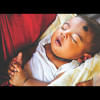Thalassaemia: The present and future for Bangladesh
Thalassaemia is the most common congenital disorder in Bangladesh. It is estimated that nearly 14,000 thalassaemic children are born every year in our country. 10% of our population are carriers of the disease while in tribal population more than 30% are carriers. Awareness of the disease is very poor.
Awareness of the disease and carrier detection has been partially successful in preventing the births of thalassaemic children in some countries of the world, especially, where abortion is not legal. Prevention of births of thalassaemic children is the best solution. But prevention of births of thalassaemic children by creating awareness, dissuasion of marriage between carriers or identify carrier couples before marriage and to offer counselling to separate has a limited success.
Prenatal diagnosis and abortion of affected foetus have been most successful in preventing the births of thalassaemic children as seen in many countries of the world like Cyprus, Greece and Iran. Prenatal diagnosis is the way to know before birth whether the foetus has thalassaemia or not, and abortion advised if the foetus has thalassaemia but final decision are with the parents to make a choice.
Prenatal diagnosis procedure is done only in Dhaka and people and even doctors and finally, a significant number of gynaecologists and obstetricians are not aware of it. It is very important that awareness of the disease is disseminated to control the disease.
Nearly 99% of mothers seeking a prenatal diagnosis in DNA lab of Dhaka Shishu Hospital are those who already have one or two thalassaemic children. This situation will not improve unless gynaecologists test for carrier status when the couple first visits them and advice prenatal diagnosis if both the couple are carriers of the disease.
The government of Bangladesh has taken note of the magnitude of the problem and is recently creating awareness of the disease, which is a very commendable step. It is very important that besides creating awareness of the disease and carrier detection, the government must also simultaneously make facilities for prenatal diagnosis.
DNA lab should be immediately set up in each division with proper training of gynaecologists for collection of samples and training of molecular biologists or biochemists for DNA analysis.
In India Right of a person with disability disorders (RPWA) has recognised persons with blood disorders (thalassaemia, Haemophilia and sickle cell disease) as persons with disabilities under the Act.
The first and foremost benefit of The RPWD Act 2016 is non – discrimination in service, and second most important benefit would be 'Reservation in Higher Education'. Extra facilities will also be given to these patients like more leave, time for transfusion etc. Bangladesh has also passed an act named 'Persons with Disabilities Rights Protection Act In Bangladesh 2013' where autism, physical disabilities, psychosocial problems, visual impairment, speech disability, intellectual disability, hearing disability, cerebral palsy, Down's syndrome has been included in this Act. Thalassaemia and Haemophilia should also be included in this Act.
Thalassaemia sufferers are all time patients, going to the hospital every month or even earlier. They need to arrange blood from different sources, money to buy medicine and need to get admission in a hospital which itself is time consuming where there no thalassaemia centres. They are therefore entitled to get extra facilities to have a better quality of life.
The writer is the President of Dhaka Shishu Hospital Thalassaemia Centre.
Email: [email protected]

 For all latest news, follow The Daily Star's Google News channel.
For all latest news, follow The Daily Star's Google News channel. 




Comments